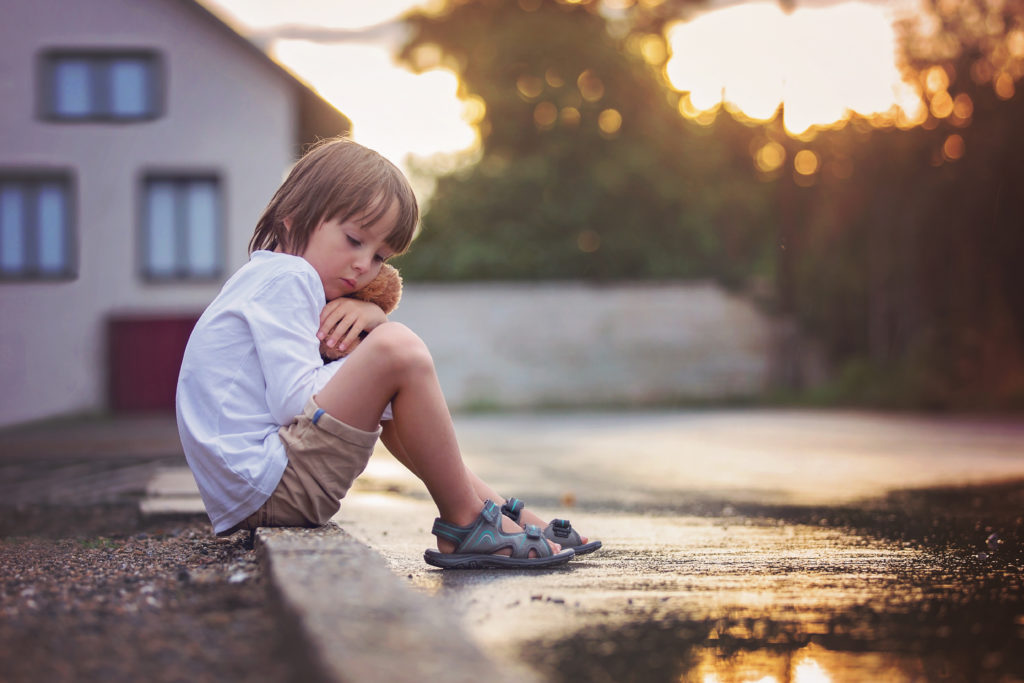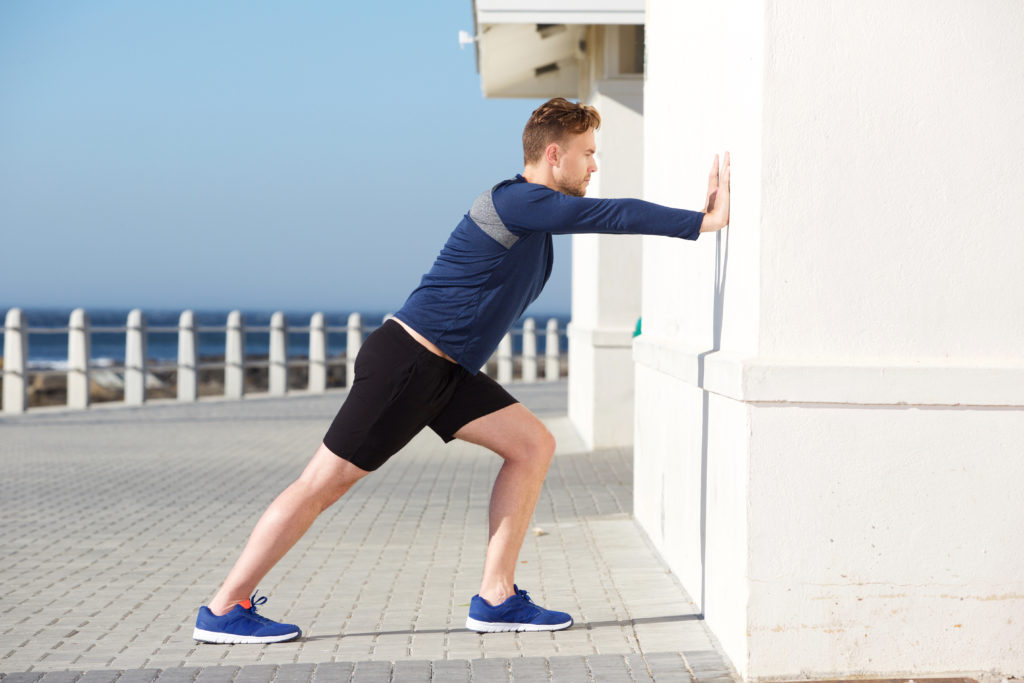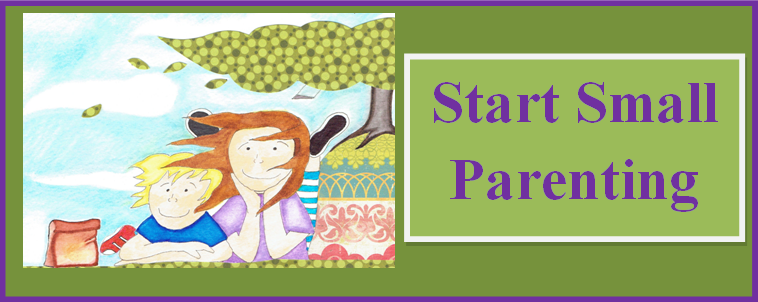
Just like adults, children get stressed. Sometimes it might be hard to tell that our children are stressed, and if so, what is stressing them. This is an area where it is important to look closely with your parent detective senses.
What behaviors might you find if your child is stressed? Maybe you notice a new habit like nailbiting or bedwetting. Maybe your child is angrier than usual or seems to have a shorter fuse. Or maybe he is quieter or more withdrawn.
Navigating the emotional world can also be stressful. Some emotions feel very icky. It’s common for kids to try to stuff them away. But no matter how tight the door to where they have been banished, emotions will find a way to escape and be known. If there is no safe place for them, the next step is for the child to disassociate from them. This fragmentation does not bode well as the child grows older. When the art of decompressing remains a mystery, children learn escapism – through media devices and then other substances as they grow older.
Each day holds a variety of stimulants. Even the calmest of children will benefit from decompression skills. Your child needs your help with this as kids aren’t often able to do that for themselves.
Release the Pressure
Imagine a pressure cooker with a pot roast inside. As the heat builds up, there is a lot of steam. You have to stand back when you turn the pressure release valve because that hot steam shoots straight up. We all need to release the steam that builds up inside of us. Sometimes this looks like a tantrum (not just kids!)
There are lots of ways to provide decompression opportunities, or Pressure Release Valves. These can be practiced when the child is not entwined in a big emotion. These can be helpful for kids of any age as well as the parents.
The best way to introduce pressure release valve experiences or ideas is when children are calm and relaxed. They can first develop familiarity before being guided to use them during a more difficult experience.
Draw out a few of these on a whiteboard. With young children, practice them daily using puppets, dolls, trucks, socks, etc. to show how anger can be released with one of the ideas on the whiteboard. You can circle one or two favorites that your family is working on together.
If you sense a day has been extra tough, gently encourage your child to check the board and practice a release. For instance, your child might be withdrawing or she might move easily into anger after a rough day at school. Over time, she will be able to choose more easily the pressure release valves that work best for her right when she gets home.
Ten Pressure Release Valves
Here are 10 ideas for Pressure Release Valves. Think of this list like the menu items at a restaurant. Pick and choose what will make a great pressure release valve meal for your child to try. In addition, be open to any ideas you and your child might come up with together.
- Breath Play
Deep breathing is one of the best ways to lower stress in the body. This is because when you breathe deeply, it sends a message to your brain to calm down and relax. The brain then sends this message to your body. … Breathing exercises are a good way to relax, reduce tension, and relieve stress.
Pursed Lip Breathing
When someone is under stress or experiencing symptoms of fight or flight, one outcome is often shortness of breath. Pursed lip breathing is one of the simplest ways to control this. It provides a quick and easy way to slow the pace of breathing, making each breath more effective. This can slow the breathing rate, improve breathing patterns, relieve shortness of breath, and cause general relaxation.
Smell a flower. Blow a Bubble.
- Take a slow, deep breath in through nose as if smelling a sweet flower.
- Hold an imaginary bubble wand to your lips. Blow out through pursed lips slowly and evenly as if trying to whistle. Blow the imaginary bubble.
- Repeat
Five Finger Breath
- 5 Slow Breaths – Starting with the thumb, sse a finger to count off each breath. The visual of the finger and the kinesthetic action of moving each one appeals to how young kids learn.
Calm the Butterfly
Have your child imagine a butterfly peacefully resting. At the first inkling of anxiousness, stress, threat, or negativity, the child can see the wings begin to flutter. If the stress grows, the wings might flutter faster. Take slow breaths and imagine the butterfly coming to rest, even going to sleep.
More Breath Play
Once Pursed Lip Breathing has been learned and practiced, you can add in other fun breathing games.
- Blow Bubbles – with real bubbles. This encourages a conscious outbreath.
- Blow Out a Candle – pretend to blow out a candle and watch the pretend wisps rise into the sky. The child can also blow out a real candle with your supervision.
- Tickle Your Finger With Your Breath – similar to a candle blow with the added sensory feedback of the feeling of the breath.
- Huff and Puff like the Big Bad Wolf – Read the Three Little Pigs and then practice breathing like the wolf.
- Count as You Blow Out – who can blow out the longest?
- Music
When someone puts on your favorite song, you take notice. You might even sing along or start dancing. It’s hard to be upset when you’re singing. Go on…try…
Music is rooted in the primitive brain structures that are involved in motivation, reward, and emotion. It engages the right brain, calms the nervous system, and accesses the pleasure and reward centers of the brain. It can change your child’s state. A song sung together increases connection. Banging drums or kitchen pots can release stored energy and interrupt an emotional state or pattern.
- All Kinds of MovementMany forms of movement can release pressure. Energy is mobilized through movement which can help move stress hormones like cortisone, adrenalin, and norepinephrine. Sometimes these rise with an anger snap or build up slowly throughout the day while the child maintains their mature self out in the world.Twirl with ribbons, jump on a trampoline, do kids’ yoga, leap off tree stumps, climb through couch cushions on the floor, hop on tape lines, stomp outside on the deck, etc. Given the opportunity, kids are pretty good at figuring out how to move.
Push the Wall
In particular, this next move of pushing against the wall has many benefits.
Deep joint pressure nourishes the proprioceptive system and has a calming effect. Pressing different body parts strengthens body awareness. This move also helps organize the child’s sensory system. What’s really neat is that it’s calming for high energy kids and activating for those with low energy! It will surely give kids giggles and diffuse tension. The fun helps build connection with any other family members who are pushing the wall as well.
Be sure to model it for your child – especially when you are feeling frustrated – even if your child doesn’t want to join in.
The steps:
- “Let’s make the room bigger. Come on and help me out.”
- Lean into the wall with your arms, feet spread front to back in a wide lunge.
- Push hard three times, for 5-10 seconds each time. Take deep breaths while you are pushing.
- Move to each wall, and push three times.
- Then say, “Now the ceiling’s too low!” Jump up and down and try to push the ceiling away. You can lie on your backs and pretend to push the ceiling away, too.
- “The room is STILL too small.” Stomp on the floor to push it down.

- Art
Art is an expression of thoughts and feelings, a natural way of calming the mind, and an outlet for creativity. Emotions like anger or sadness can take form on the page or in a clay figure.
Keep natural art supplies on hand. Consider beeswax crayons, natural fiber papers, watercolor paints, beads and feathers, string and yarn.
Here’s a wonderful idea if you have a toddler who loves to paint but you don’t have time to clean up a mess. Put fingerpaint in a ziplock baggy. Tape it securely to a window. The child can move the paint all around within the bag. No mess.
- Nature
Getting out in the sunshine (or rain!) definitely helps to change one’s state. Sit by a river. Pick wild flowers in a meadow. Look for berries under the snow. How many birds can you spy?
It’s hard to stay angry or stuff an emotion if you take the dog for a walk or hunt for four leaf clovers. Projects in nature are very stress-reducing.
Here’s a few ideas:
- Flower petal stained glass.
Collect flowers and leaves. Arrange them on contact paper. Hang them in a window.
- Paint rocks with melted crayon.
Heat smooth rocks at 350o. Over tinfoil, touch crayons to the hot rocks. They will melt and then harden into a waxy shell.
- Brighten your yard.
Soak sidewalk chalk in water for a couple of hours to soften it, then go outside and choose a smooth bark. Rub the chalk on the trunk to give it a coat of color. Smooth out the chalk and blend the hues with a large paintbrush and water. It’s temporary and will not harm the tree. There is the added benefit of large gross motor movement and crossing mid-line as well.
There are about 200,000 more ideas on the internet…
- Special Time
This can be a great opportunity to release stress. With the undivided attention of the parent as witness, in the safety of home, child’s emotions are free to surface, be expressed, change, and dissipate.
- Safe or Release Space
Designate a safe place that your child can retreat to if they come home from preschool upset, feel pouty or blue, or need to have a space for themselves. Create a fort in a devoted area of a room. Pile up soft objects like pillows and blankets. Make sure that items that can be damaged are removed. If the child wants to kick and destroy the fort, that’s fine. They can also build it back up again however they want.
- Meditate
Children can learn to meditate. This can be a skill they use throughout life. It can also be a time to check in with emotions and their body.
Here are some that I recommend:
- Inner Kids by Sam and Annika Harris:
7 short guided mindfulness meditations, each under 5 minutes.
http://annakaharris.com/mindfulness-for-children/ - A fun video about meditation from the same person
http://annakaharris.com/category/meditation/
- Hot Air Balloon Ride
15 minute, quality-produced meditation for children at bedtime to help promote a peaceful sleep with restful dreams. It begins with a hot air balloon ride, visiting a zoo, and going for a balloon ride with your child’s favorite animal from the zoo.
- Water
A bath, shower, or hot tub can be a relaxing way to release the stressors of the day. The hot tub was my son’s favorite go-to all through grade school.
- Positive Memory
If your child is stuck in an emotion, one way to help them out is to access their right brain with a positive memory such as baking cookies with grandma or thinking of their favorite toy. The more they practice this when calm, the more the memory will be readily available to help change their state when they need it.
Wrapping Up
Many of these are simply great activities to do with your kids. Here in this context, we are putting added awareness on the ability of the child to learn to decompress and experience emotions in a safe environment. These activities all have capabilities of calming the mind, which will help the child develop emotional resilience as they grow.


Thanks Annie, these are wonderful, useful techniques that I will pass on.
Thanks for the great tips!